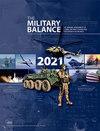Chapter One: Defence and military analysis
Q3 Social Sciences
引用次数: 0
Abstract
latest modernisation phase (the ‘New Look’) began in 2008 has not brought the desired outcome. While important vulnerabilities in Russian capabilities have been demonstrated, once Russia resorted to artillery-heavy assaults the gap between expectation and performance was – in relation to Russia’s weapons – perhaps reduced a little. But in other aspects – such as command and control, maintenance, logistics, planning, reconnaissance and soldier training – significant deficiencies soon became apparent. In the first real test of Russian combat power against a peer adversary for decades, the armed forces have so far come up short. Military setbacks and the only incrementallygrowing resources that Russia is committing to the war have meant that there is a growing gap between military realities and Russia’s aims. As of late 2022, though state media control remained tight, and public support ostensibly remained high, some in the Russian security community likely recognised this gap. A crucial issue was whether this was recognised also by President Putin and the military leadership and, if it was, whether they would sustain their intentions or revise goals in line with miltary realities on the ground. If a key objective of the war was to reassert Russian primacy over its ‘near abroad’, it has had the opposite effect. The war has reinforced Ukrainian statehood and galvanised its population and armed forces. The effect of the war on Russia’s periphery has been varied. Belarus has been drawn closer to Moscow and has been complicit in Russia’s actions by offering logistical and material – if not directly physical – support. But in Central Asia, Russia’s grip appeared weaker at the end than at the start of 2022, while its ability to be an effective broker elsewhere, such as between Armenia and Azerbaijan, is in doubt. The effect in Europe has been profound. Russia’s European strategy, as winter deepened, appeared to focus on weakening Western public resolve by cutting gas supplies. This has caused European states to sharpen their attention on resilience and energy security. It has made more important continued Ukrainian military progress in winter 2022–23 – even if this is at a reduced tempo compared to its mid-September Russia’s full-scale invasion of Ukraine in February 2022 is reshaping the security environment in Europe and has ramifications elsewhere. The scale of Moscow’s miscalculation is apparent nearly a year on, but at the outset it was not clear that Russia would face such difficulty. One of the preliminary lessons offered by the war – beyond those for the belligerents – is that defence and intelligence specialists need to sharpen focus on methodologies important to the assessment of military capabilities, and in this case revise how they evaluate Russia’s armed forces. Other early take-aways include those related to the importance of aspects of military capability such as intelligence, surveillance and reconnaissance (ISR), longer range artillery and better targeting, and the importance of training and morale. Yet more concern resilience, both civil and military. Meanwhile, although the United States has led international military support for Ukraine, and Washington perceives Russia as the immediate threat, its longer-term focus remains what it views as the challenge from China. Beijing continues to modernise its armed forces at pace. Russia’s war also offers lessons for the US armed forces and its defence industry, both for its involvement in Europe, but also in possible contingencies elsewhere, including in Asia.第一章:国防与军事分析
2008年开始的最新现代化阶段(“新面貌”)并没有带来预期的结果。虽然俄罗斯能力的重要弱点已经被证明,但一旦俄罗斯诉诸于重型火炮攻击,就俄罗斯的武器而言,预期与表现之间的差距可能会缩小一点。但是在其他方面,例如指挥和控制、维修、后勤、规划、侦察和士兵训练,重大缺陷很快就显现出来。这是几十年来俄罗斯首次对实力相当的对手进行真正的战斗能力测试,但迄今为止,俄罗斯武装部队的表现还不尽如人意。军事上的挫折和俄罗斯投入战争的唯一逐渐增加的资源意味着军事现实和俄罗斯的目标之间的差距越来越大。截至2022年底,尽管国家媒体控制仍然严格,公众支持率表面上仍然很高,但俄罗斯安全部门的一些人可能意识到了这一差距。一个关键的问题是,普京总统和军方领导层是否也认识到这一点,如果认识到这一点,他们是会维持自己的意图,还是会根据实地的军事现实修改目标。如果说这场战争的一个关键目标是重申俄罗斯对其“近邻”的主导地位,那么它却产生了相反的效果。这场战争巩固了乌克兰的国家地位,激励了乌克兰人民和武装部队。这场战争对俄罗斯周边地区的影响各不相同。白俄罗斯与莫斯科走得更近,并通过提供后勤和物质支持(如果不是直接的物质支持),与俄罗斯串通一气。但在中亚,俄罗斯的控制力在年底似乎比2022年初有所减弱,而它在其他地区(如亚美尼亚和阿塞拜疆之间)充当有效中间人的能力也令人怀疑。这在欧洲产生了深远的影响。随着冬季的加深,俄罗斯的欧洲战略似乎集中在通过削减天然气供应来削弱西方公众的决心上。这促使欧洲国家加强了对弹性和能源安全的关注。俄罗斯在2022 - 23年冬季取得了更重要的持续的乌克兰军事进展——尽管与9月中旬相比,这一进展的速度有所放缓。俄罗斯在2022年2月全面入侵乌克兰,正在重塑欧洲的安全环境,并在其他地方产生影响。近一年来,莫斯科误判的程度显而易见,但一开始并不清楚俄罗斯是否会面临这样的困难。这场战争提供的初步教训之一——除了对交战双方的教训之外——是,国防和情报专家需要更加关注对军事能力评估重要的方法,并在这种情况下修改他们评估俄罗斯武装部队的方式。其他早期的收获包括那些与军事能力的重要性有关的方面,如情报、监视和侦察(ISR)、远程火炮和更好的瞄准,以及训练和士气的重要性。然而,更令人担忧的是民事和军事方面的复原力。与此同时,尽管美国领导了对乌克兰的国际军事支持,而且华盛顿认为俄罗斯是迫在眉睫的威胁,但其长期关注的焦点仍然是它所认为的来自中国的挑战。北京继续加快军队现代化的步伐。俄罗斯战争还为美国武装部队及其国防工业提供了教训,无论是在欧洲的介入,还是在其他地区(包括亚洲)可能发生的突发事件。
本文章由计算机程序翻译,如有差异,请以英文原文为准。
求助全文
约1分钟内获得全文
求助全文
来源期刊

The Military Balance
Social Sciences-Political Science and International Relations
CiteScore
1.00
自引率
0.00%
发文量
18
 求助内容:
求助内容: 应助结果提醒方式:
应助结果提醒方式:


